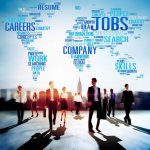Last week we gave you a brief overview of how payslips work. This week, we figured we’d go a little deeper and show you the full ins and out, so you can expertly navigate these fascinating slips of paper:
Tax Codes
These are typically used by employers to help them work out how much income tax they need to deduct from your pay. Now, how much is taken is determined by your annual personal allowance – which is decided by the HMRC. Using this information, your employer will take your annual salary, will subtract your personal allowance and will then tax the remaining amount by 20% (but split over 12 months).
But what does your actual tax code mean?
When it comes to the tax code you will see something similar to this: 1250L. This means you are allowed to earn £12,500 per year before you’re taxed, while the letter L means you’re entitled to a standard tax-free personal allowance.
Other scenarios:
- If you see the letter M it means you have received a marriage allowance from your partner;
- If you see the letter N then this means you have given your marriage allowance to your partner;
- If you see a T in your code this means other calculations are needed to work out your personal allowance.
These are just a handful of some of the letters you’ll see. We suggest visiting the HMRC website to see the full list and their meanings. There will be times when you’ll see the following: W1, M1 or X. These relate to emergency tax and indicate that you will need to pay tax on all income above the basic allowance. These should be temporary and you will need to work with your employer to find the right tax code.
Total Gross Pay
This signifies the total amount you’ve earned before any deductions have been made. Now, you should already know this as this figure is based on your annual salary/hourly earnings (which are a set amount).
Total Net Pay
This is what you have earned after all of your deductions have been taken off.
What is YTD?
This stands for Year to Date and represents the total of all transactions from the start of the financial year until the current date i.e. the date on your pay slip.
What about abbreviations?
Okay, you know the basics of your payslip and have got the gist of how it should look, but what about the other abbreviations you can see?
- BACS – Bankers Automated Clearing Service, which is an electronic payment scheme;
- BA – Bereavement Allowance, this is an allowance given to widowed or surviving civil partners;
- CHB – Child Benefit for parents with children under 16 years old;
- CTC – Child Tax Credits for parents with children under 16 years old;
- NI – National Insurance;
- PAYE – Pay as you Earn – is a form of tax deducted from your pay by the HMRC;
- EE – pension contributions paid by the employee;
- ERS – pension contributions paid by your employer;
- SAP – Statutory Adoption Pay;
- ShPP – Shared Paternity Pay;
- SMP – Statutory Maternity Pay;
- SPP – Statutory Paternity Pay;
- SSP – Statutory Sick Pay
Now, you’ll probably only ever see a handful of these in your lifetime; however, as your situation changes i.e. you retire, have children, etc. you may find them appearing on your payslip. If that is the case, simply refer to the above for guidance.
Conclusion
Whether you’re an employer or an employee, it is good to have a strong grasp of how pay, tax and national insurance works. Not only will it help you to navigate your payslip, but it will help you to appreciate your earnings.
If on the other hand you are interested in learning more about bookkeeping and accounts, then why not consider going on an online accounting or bookkeeping course? Each of these will help you achieve a better appreciation of the subject.






Comments (0)
Join the conversationCancel Reply